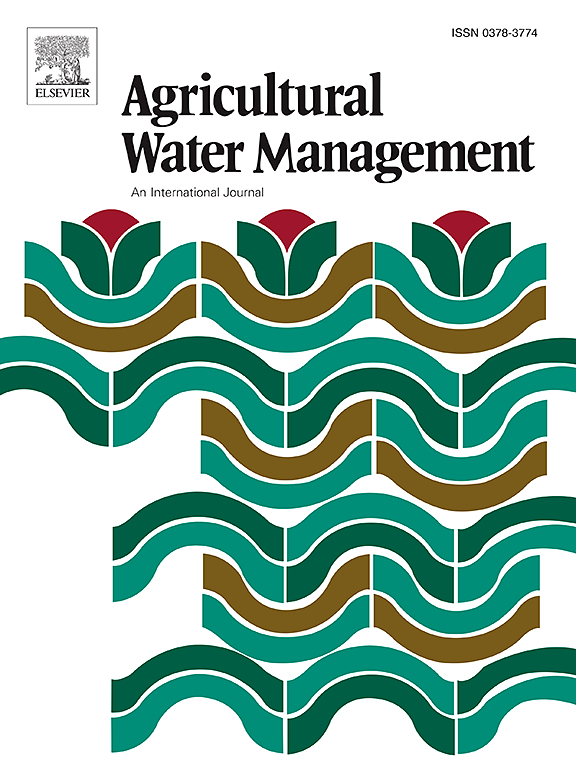Geospatial techniques for identifying optimal rainwater harvesting sites to enhance agricultural productivity in hyper arid areas
IF 6.5
1区 农林科学
Q1 AGRONOMY
引用次数: 0
Abstract
The increasing demand for freshwater, combined with limited availability and the exacerbating effects of climate change, poses significant global challenges to sustainable water supply. Addressing the widening gap between water supply and demand necessitates the adoption of innovative and sustainable water management strategies. As a renewable and locally available resource, rainwater holds considerable potential to alleviate water scarcity in arid and semi-arid regions. This study explores rainwater harvesting (RWH) as a practical strategy to address the annual groundwater deficit in the State of Qatar. A Geographic Information System (GIS)-based approach was employed to assess the potential of RWH implementation. The analysis integrated ground-based observations with satellite-derived datasets to identify suitable locations for RWH. To enhance the accuracy of the suitability mapping, legal constraints such as urban areas, parks, and farms as well as protective buffer zones were applied, resulting in a refined delineation of land realistically available for RWH development. The findings indicate that approximately 59 % of Qatar’s land area is potentially suitable for RWH initiatives. Of this, 1.27 % was classified as 'very highly suitable', 27.27 % as 'highly suitable', and 49.50 % as 'moderately suitable'. Assuming the installation of engineered RWH wells with a recharge efficiency of 40 % and annual rainfall of 67 mm, the estimated net groundwater recharge from these three suitability classes could reach approximately 107 million m³ annually. These results highlight the substantial contribution that RWH can potentially make toward reducing Qatar’s national freshwater deficit. The outcomes of this research support the strategic expansion of RWH infrastructure and provide a basis for informed decision-making in future water resource planning across the country.
确定最佳雨水收集地点以提高超干旱地区农业生产力的地理空间技术
对淡水的需求不断增加,加上供应有限和气候变化的影响加剧,对可持续供水构成了重大的全球挑战。要解决日益扩大的水供需差距,就必须采用创新和可持续的水管理战略。雨水作为一种可再生和当地可用的资源,在缓解干旱和半干旱地区的水资源短缺方面具有相当大的潜力。本研究探讨了雨水收集(RWH)作为解决卡塔尔年度地下水短缺的实用策略。采用基于地理信息系统(GIS)的方法来评估RWH实施的潜力。该分析综合了地面观测和卫星衍生数据集,以确定RWH的合适位置。为了提高适宜性地图的准确性,我们应用了法律限制,如城市地区、公园、农场以及保护性缓冲区,从而精确地划定了可用于RWH开发的土地。研究结果表明,卡塔尔大约59% %的土地面积可能适合RWH倡议。其中,1.27 %被归类为“非常非常适合”,27.27 %被归类为“非常适合”,49.50 %被归类为“中等适合”。假设工程回灌井的回灌效率为40% %,年降雨量为67 mm,则这三个适宜等级的地下水年净回灌量约为1.07亿m³ 。这些结果突出了RWH可以为减少卡塔尔国家淡水赤字做出的巨大贡献。本研究的结果支持了RWH基础设施的战略扩张,并为全国未来水资源规划的明智决策提供了基础。
本文章由计算机程序翻译,如有差异,请以英文原文为准。
求助全文
约1分钟内获得全文
求助全文
来源期刊

Agricultural Water Management
农林科学-农艺学
CiteScore
12.10
自引率
14.90%
发文量
648
审稿时长
4.9 months
期刊介绍:
Agricultural Water Management publishes papers of international significance relating to the science, economics, and policy of agricultural water management. In all cases, manuscripts must address implications and provide insight regarding agricultural water management.
 求助内容:
求助内容: 应助结果提醒方式:
应助结果提醒方式:


